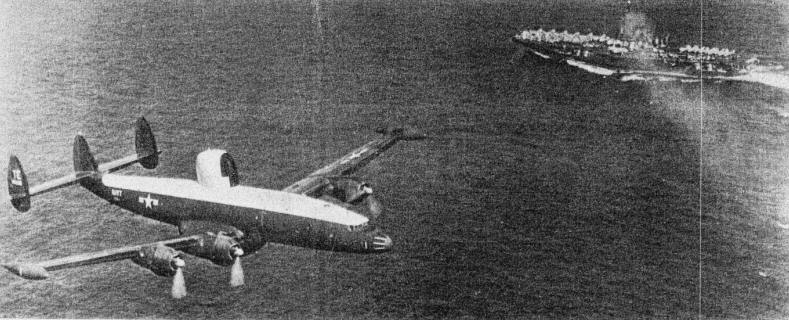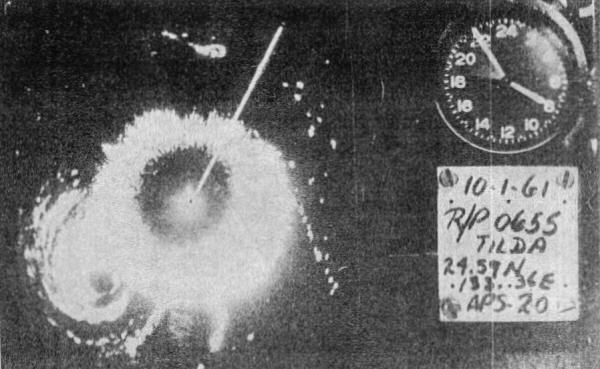 VW-1 provides Airborne Early Warning to the Seventh Fleet ...
VW-1 provides Airborne Early Warning to the Seventh Fleet ...
'TYPHOON TRACKERS' PREPARE FOR NEW STORM SEASON
The appearance of a whirling, swirling twisting or massive white cloud generally brings fright to the nerves of many. Fright, for those signs represent clouds of destruction, whether the cloud is identified as the television famed cleanse-all or a typhoon.
Both clouds are a cleanse-all by form: the household image constructively cleanses one's home while the other destructively rages and removes with the forethought of chaos and broken hearts.
One of the jobs of Airborne Early Warning Squadron One (VW-1) is to track, locate and identify for the purpose of fore warning populations so the populace can remove itself from danger.
This job requires a watchful eye for a minimum of 24 hours a day and a ready crew and craft to track a typhoon before havoc and disaster take their tolls.
The squadron is presently flying EC-121K's a modified version of the Lockheed Super Constellation. And it has an additional pool aircraft allowed for periodic maintenance rework in Hawaii by Lockheed Air Service. The "Super Connie" has an exceptionally high degree of reliability and performances capabilities. Flying within a radius of 1400 nautical miles the aircraft can provide weather reconnaissance anywhere in the Fleet Weather Central area of responsibilities.
However no aircraft can be of any use without competent pilots and crews. The air squadron maintains 83 officers and 450 enlisted men to carry out the vital missions of VW-1.
For insurance, there is always one ship's crew prepared to embark on a tracking mission within four hours or enough time to locate, track and report the direction of any tropical disturbance.
The gathering of vital information about a typhoon is done first at a low level fix then the craft ventures to the eye of a storm and finally returns to the edge to take another fix for verification. This generally takes about 18 hours or more flying time amid the turbulence of high-speed winds and gusts.
To accomplish a fix the craft must venture within the calm eye of a storm which sometimes provides some difficulty for the winds of some storms have been reported at 180 miles per hour. While the eye of typhoons have been said to exist from eight miles to obliteration its eye remains calm. And if a craft is caught while the eye of a storm is closing up the chance of the aircraft being reduced to junk yard wreckage is very, very high.
However tracking tropical storms and early warning readiness are not the sole missions of VW-1. And if the already demanding missions were not heavy enough; the squadron trains meteorological crews and is the training squadron for C-121's.
 . . . . . and tracks typhoons such as this one.
. . . . . and tracks typhoons such as this one.
Last year the air squadron met 316 of 317 flight requirements in tracking for FWC. These included daylight penetrations on tropical depressions and night radar fixes on tropical storms and typhoons.
Since commissioning, Airborne Early Warning Squadron has logged over 90,000 accident free hours an equivalent of 28 million miles.
The squadrons insignia symbolizes Paul Revere mounted on the flying white horse, Pegasus, riding to warn his countrymen of the enemy's approach.
This symbol will undoubtedly remain both familiar and respected by all western Pacific personnel for years to come as VW-1 continues to provide early warning of typhoons or potential enemies.

